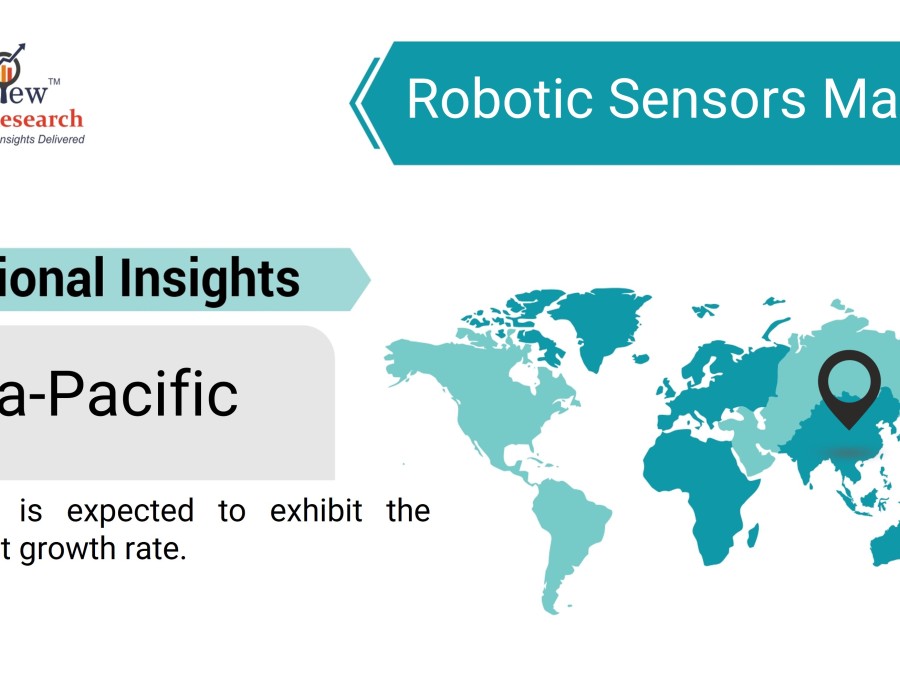Industry 4.0, often referred to as the Fourth Industrial Revolution, represents the convergence of digital, physical, and biological systems, with a heavy reliance on automation and smart technologies. Central to this transformation are robotic sensors, which serve as the critical enablers of intelligent machines and systems. These sensors are transforming industries by enhancing precision, improving efficiency, and fostering innovation across sectors like manufacturing, logistics, healthcare, and more. This article explores the role of robotic sensors in shaping Industry 4.0.
According to Stratview Research, the robotic sensors market was estimated at USD 1.94 billion in 2022 and is likely to grow at a CAGR of 9.48% during 2023-2028 to reach USD 3.33 billion in 2028.
What Are Robotic Sensors?
Robotic sensors are devices that enable robots to perceive and interact with their environment. These sensors collect data from various physical parameters such as temperature, pressure, motion, proximity, and more, allowing robots to understand and react to the world around them. Common types of sensors include vision sensors, proximity sensors, tactile sensors, force/torque sensors, and environmental sensors. The information collected is then processed, enabling robots to make informed decisions and perform complex tasks autonomously.
Enhancing Automation and Smart Manufacturing
Robotic sensors play a crucial role in automation and smart manufacturing, two core components of Industry 4.0. In smart factories, robots equipped with advanced sensors can monitor production lines in real-time, detecting defects, optimizing workflows, and predicting maintenance needs. Vision sensors, for example, allow robots to inspect products with high precision, while force sensors enable them to handle delicate tasks such as assembling electronic components. This level of automation not only improves production efficiency but also ensures higher product quality and reduces operational costs.
Enabling Collaborative Robotics
A key trend in Industry 4.0 is the rise of collaborative robots, or "cobots," which work alongside human operators in shared environments. Robotic sensors are fundamental to the success of cobots, as they allow these machines to safely interact with humans. Sensors such as proximity and tactile sensors enable cobots to detect human presence and adjust their actions accordingly to avoid collisions or injuries. This capability fosters a safer and more productive work environment, making automation accessible to smaller businesses that may not have previously considered robotics.
Driving Innovation in Autonomous Systems
The application of robotic sensors extends beyond manufacturing to industries such as logistics, healthcare, and agriculture. In logistics, sensors enable autonomous vehicles and drones to navigate warehouses and deliver goods with precision. In healthcare, robotic sensors allow surgical robots to perform delicate operations with unmatched accuracy. In agriculture, environmental sensors help autonomous machines monitor crop health and optimize resource usage. These innovations are pushing the boundaries of what is possible in automation, leading to smarter and more efficient industries.
Future Outlook
As Industry 4.0 continues to evolve, the demand for advanced robotic sensors is expected to grow. Innovations such as artificial intelligence (AI) and machine learning (ML) are driving the development of more intelligent sensors that can process data in real-time and adapt to changing environments. These sensors will enable robots to become even more autonomous, capable of learning from their surroundings and improving their performance over time.
Conclusion
Robotic sensors are playing a pivotal role in shaping Industry 4.0 by enabling smarter, more efficient, and safer automation systems. From smart manufacturing to autonomous systems, these sensors are unlocking new opportunities for innovation across multiple industries. As technology continues to advance, the impact of robotic sensors on the industrial landscape will only grow, driving the next wave of industrial transformation.






Comments